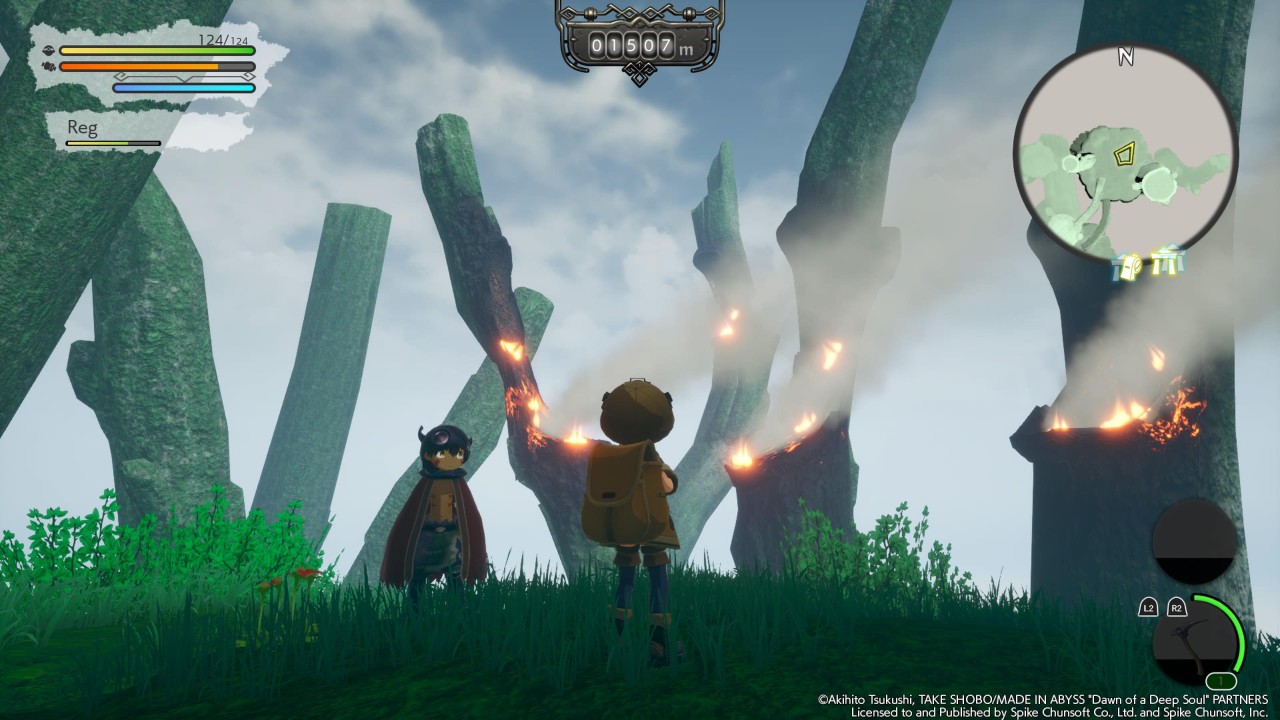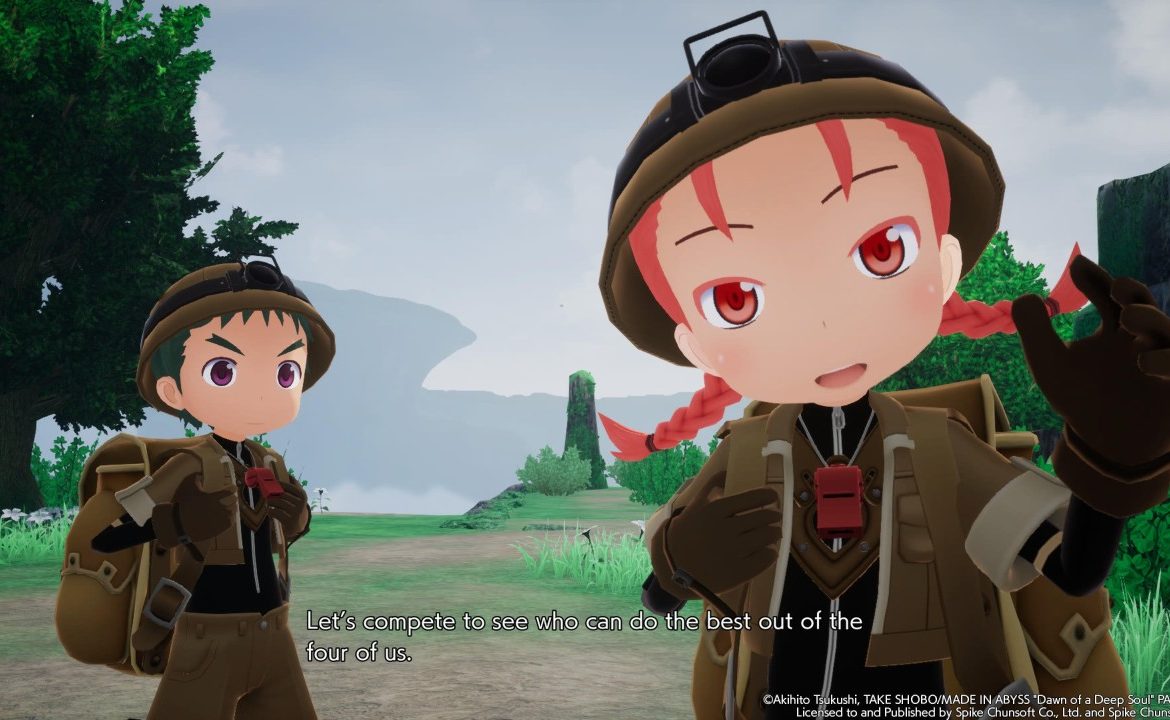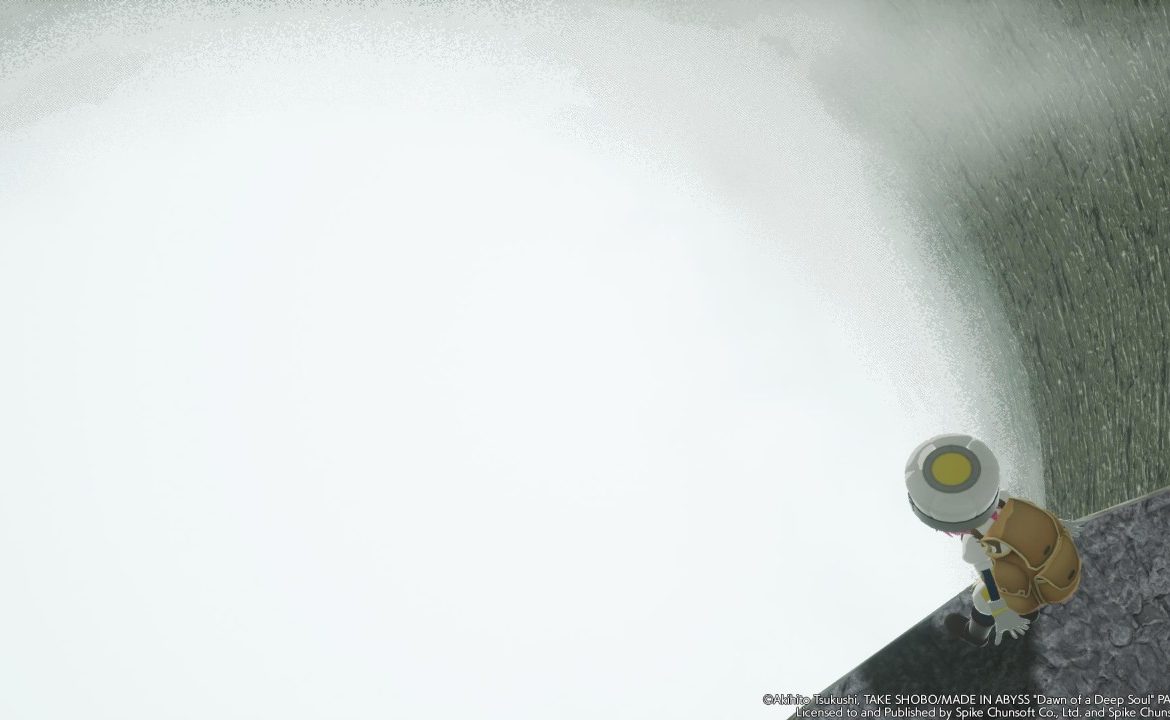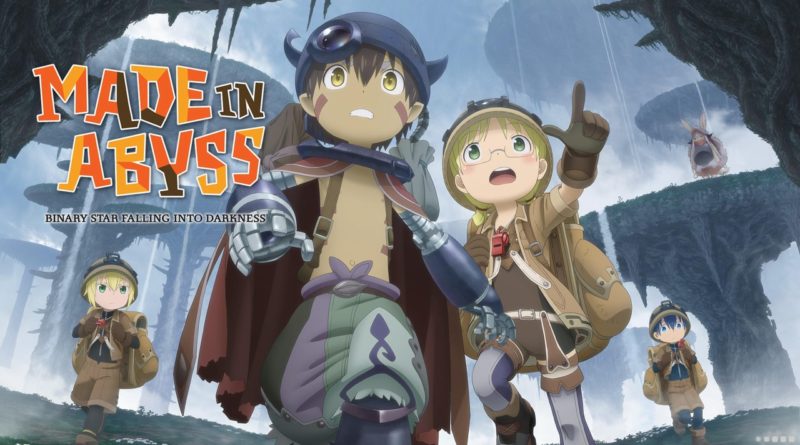Made in Abyss: Binary Star Falling into Darkness Review (PS4) – Let’s Get Deep
Does the first Made in Abyss game offer something great to dive into, or is it cursed to be another abyss-mal anime tie-in game? The Finger Guns review:
With its second season airing at the time of writing, a movie and even a live-action adaptation in the works, it was only a matter of time until the popular manga/anime series, Made in Abyss, would get a video game tie-in.
Made in Abyss: Binary Star Falling into Darkness (I’ll be calling it simply “Made in Abyss: BSFD” from here on out) has two different campaigns: Hello Abyss, which adapts the first 8 episodes of the first season of the show; and Deep in Abyss, an original story that takes place parallel to the first season of the show, and the story was even supervised by franchise creator Akihito Tsukukishi.
Hello Darkness, My Old Friend
Hello Abyss acts as Made in Abyss: BSFD’s tutorial. Players control franchise protagonist Riko as she and Reg, an amnesiac robot boy, venture into the darkness of the titular Abyss in search of her mother, a legendary Cave Raider. Made in Abyss is a franchise that translates excellently into video game form. It’s a world where a mysterious pit (the Abyss) was discovered 1900 years ago, and in that time, a city and society were built around the Abyss to discover its secrets. The Abyss features several layers, and the deeper you dive, the harder it is to resurface, thanks to the Curse of the Abyss and the many symptoms each layer has associated with it.
Riko and Reg are Cave Raiders, a group that dives into the Abyss to discover relics and secrets to better the lives of the people in their town, with the more powerful relics being world-changing technology. This translates into gameplay by exploring the various layers of the Abyss, facing its many dangers and excavating ruins and materials to sell on the surface.

I watched the show in the lead-up to the review (it’s fantastic), and Hello Abyss is a decent enough adaptation. They even made sure to get all the original voice cast back in Japanese and English, and Made in Abyss: BSFD is fully voiced, even outside its main quest content. However, as part of the game, it feels simultaneously both rushed and drawn out. It’s also a pretty bland abridgement of the show, with its story presented in rigid cutscenes or a couple of characters talking on a static background. Because of the static nature of Hello Abyss’s delivery, it loses a lot of the heart from the show as it rushes to get you into the Deep in Abyss mode. It took me just short of 5 hours to beat the Hello Abyss mode, which is mandatory to unlock Deep in Abyss, where the bulk of the game lies.
Making Hello Abyss a mandatory part of Made in Abyss: BSFD is genuinely to its detriment. It goes on too long, and as a tutorial, it fails to show you the best parts of Made in Abyss: BSFD, which lie in its Deep in Abyss mode. You can explore as much as you like in the Hello Abyss mode, but you shouldn’t. Because it’s adapting the source material, they can’t let Riko do too much to alter that story, meaning you don’t get access to the upgrade system found in the Deep in Abyss mode. If it was an optional mode, it would’ve been a solid little bonus, but as it stands, I think it’s a slog that will generally put people off even getting to the Deep in Abyss mode.
Down Down, Deeper and Down
Although Made in Abyss: BSFD is billed as an action RPG, I think it’s closer to a survival game. Once you’ve Unlocked Deep in Abyss, you’ll start by creating and naming your own character and begin a story that runs alongside its source material. You’ll meet the major characters featured in the series during your journey to becoming a White Whistle.
Cave raiders use a system of five coloured whistles instead of a generic ranking system, Red, Blue, Moon, Black and White. You begin as a Red Whistle, and as you hit the other ranks by completing quests, you’ll unlock new tiers of skills in each of the game’s three skill trees: Battle, made up of combat-focused skills; Cave Raid, which helps with exploration and gathering skills; and Craft, which lets you unlock different recipes in Made in Abyss: BSFD extensive crafting screen. Instead of earning XP from defeating creatures, Made in Abyss: BSFD rewards you XP through trading any relics you find in town or by completing quests. By doing this, you’ll not only get yourself points to spend in the skill trees but also cash to buy supplies to help in your Abyss dives. This loop is incredibly satisfying, and it always felt like I was unlocking something worthwhile, like being able to climb for longer or eat while climbing.

There’s a lot of climbing and eating while in the Abyss. Made in Abyss: BSFD has you manage your health, stamina, and hunger meters in each expedition. The larger the areas get, the harder it is to manage these resources. Food will always heal you while increasing your hunger and/or stamina, depending on the food. Hunger depletes over time, and stamina drops when climbing or using a weapon. Stamina refills itself so long as your hunger meter isn’t empty. Managing all of this meant that I rarely felt safe, and there was a constant risk-reward factor in whether I called it quits or kept exploring just a little longer. This sense of danger extends to the Abyss itself. The deeper you go, the more dangerous areas become, with stronger creatures littering the environment. Moving between areas reduces your health and hunger meters, meaning if you don’t have enough of each, you can’t continue.
There are tons of resources to find in Made in Abyss: BSFD, with each one used in its many crafting recipes. You unlock new recipes through the Craft skill tree, and I was always crafting new items. Weapons have durability, so it’s always worth having a few on hand. You’ll need these to deal with the various creatures that litter the Abyss. Combat itself is pretty lacklustre, with swings and dodges feeling unresponsive, even if some of the later skills help make it a little less clunky, like the ability to cancel out of an attack by dodging or using less durability lost on each swing. These are late/endgame level skills, however, meaning for the bulk of my time with Made in Abyss: BSFD, I was carrying 5 or 6 weapons with me at any one time. Smaller enemies seem to spawn around your character constantly, likely in an attempt to ensure you always have a way to get some basic food materials. However, this also meant that I was using up a lot of durability on my weapons, so they’d break very fast. This gets offset as you reach higher ranks and unlock new weapons that deal more damage meaning fewer swings to kill something, but the spawn rates in certain zones felt far too frequent.
You also have to contend with your carrying capacity. Items have specific weights, with rarer materials and more powerful weapons weighing more the deeper you explore. Made in Abyss: BSFD lets you upgrade your capacity through its skill tree system, and I always jumped to these first when I hit a new Whistle Rank. It always felt like the best option, especially as better weapons started to more than double the weight of their weaker counterparts. More carry capacity meant I could bring more to the surface and stock up on more supplies before leaving for an expedition.
Preparation is Half the Battle
Exploring a new zone would often go hand in hand with failure and death, but that seems to be the intention. If you’re not prepared, you will die or be forced to give up a run and return to the surface, losing all progress. Thankfully the game autosaves upon loading into a new area or beating a quest, and you can manually save by using an inexpensive item. This allowed for experimentation as I discovered the specifics of each new zone I’d explore. There’s even a fast travel system that’s useful on deeper dives. I found myself unable to do this in the deeper Layers, and I couldn’t work out what was causing it. I could teleport in Layer 3, but not 4 or 5, meaning I’d need to make it back to at least Layer 3 to get back to town quickly, but I was still glad it was there.
It’s not just the exploration that’s dangerous, however. The journey back to the surface has its own mechanic in the Curse of the Abyss. Climbing to the surface too fast will fill the edges of the screen with a purple haze as a sign to stop. Ignore it, and you’ll be hit with the Curse. At the higher layers, you’ll vomit and lose a chunk of your hunger meter, but the side effects increase the deeper in the Abyss you are. In later layers, you get video and audio hallucinations which are a great little touch. Your movement controls will even be mirrored as an indicator of your character’s disorientation. It adapts the concept of the Curse nicely, but all it meant in terms of gameplay was that I’d just stop moving when the haze appeared for maybe 10 seconds. A handful of times, getting the Curse felt unavoidable, but it ended up as more of a gimmick than a real threat.

Made in Abyss as a franchise is loaded with darker moments and themes. Its cutesy aesthetic is designed to lull you into a sense of safety and familiarity. While some of these darker elements are present, Made in Abyss: BSFD’s story didn’t meet my expectations after watching the show. It was enough to keep me going through, and it’s still got some good moments, but I wish it had spent more time developing the new characters to get me truly invested in this new story. It was Made in Abyss: BSFD’s core gameplay loop that got its hooks in me, and I ended up enjoying it quite a lot more than I expected.
Visually the game is pretty dated, and while its character models match their original designs pretty well, the environments don’t fare so well. The atmosphere is fantastic, especially as areas get stranger the deeper they are, but the texture work isn’t great. This is where it’s the weakest in adapting the source material: they just don’t match the fidelity or detail of the animation or original manga.
There were also quite a few visual bugs throughout my playthrough. Texture pop-in when loading into an area was pretty frequent, although that’s an Unreal Engine staple at this point. I’d also see models popping into different areas in front of me, like a gondola lift snapping onto my model as I approached it or my fishing hook floating in the environment. I’d also have models that clearly shouldn’t be there, just rendering in and out of existence.
In the end, I had quite a good time with Made in Abyss: Binary Star Falling into Darkness. In spite of its issues, its core loop hit that satisfying part of my brain in the same way clicker games do. It’s all about resource management, and that’s a loop that I always enjoy. Get resources to get better at getting more valuable resources. Like I said at the top of the review, the world of Made in Abyss translates well to game format, and if there’s ever another entry that can iron out the kinks in this one, I’d be more than happy to dive into the Abyss again. Its story isn’t the best, but if, like me, you enjoy the looping grind and genuinely dangerous worlds of games like Monster Hunter, then Made in Abyss: BSFD offers a lot to enjoy.
A satisfying game play loop is the strongest aspect of Made in Abyss: Binary Star Falling into Darkness. Resource management and balancing your character’s needs gives the game a risk vs reward angle that makes it feel more like a survival game than an action RPG. There are issues – frequent texture pop in and a lacklustre story being the most severe – but despite them, Made in Abyss: Binary Star Falling into Darkness is a rewarding experience.

Made in Abyss: Binary Star Falling into Darkness is available now on PS4 (review platform), Nintendo Switch and PC.
Developer: Chime Corporation
Publisher: Spike Chunsoft
Disclaimer: In order to complete this review, we were provided with a promotional code from the publisher. For our full review policy, please go here.
If you enjoyed this article or any more of our content, please consider our Patreon.
Make sure to follow Finger Guns on our social channels. Twitter, Facebook, Twitch, Spotify or Apple Podcasts – to keep up to date on our news, reviews and features.

